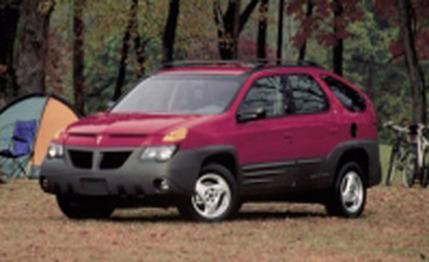 Road Test
Road Test
Face it, America, you're not getting any thinner. Nearly one of four persons in this country is obese, according to the National Institutes of Health. Not just fat, obese. Or maybe we're on the verge of a societal shift in thinking. Maybe we're headed back to the thinking of the Renaissance, when pale, size-20 women were sex symbols and a tanned, muscled figure meant you were a peasant forced to work in the fields.
Don't get your hopes up, fatty. As we get porkier, we're also spending a ton of dough to get the fat off. Americans spend more than $33 billion annually on this battle of the bulge, and that's more than the gross domestic product of Ethiopia, a place we all know has yet to experience any problems of paunch. News flash: We're gluttons.
Maybe all this weight-loss spending is one reason we're seeing so many vehicles specifically designed for "active lifestyles." We wonder: Are these vehicles meant to appeal to the already active and fit, or are they the dangling carrots for those who would like to turn over the active leaf? Is there such a thing as a vehicle that can be thought of as a kind of four-wheeled Thighmaster, a vehicle that can put its owner on the road to fitness?
If this line of reasoning is correct -- although no automaker is admitting to it -- then Pontiac's Aztek could well become the darling of the Susan Powter crowd. It's perfectly sized and configured to carry all your fitness toys -- Rollerblades, bikes, skateboards, dueling swords, ninja sticks.
The Aztek sprang from a concept car first seen at the Detroit auto show in 1999. The idea was simple and sound: a cross between an SUV and a minivan that had room enough to carry all your stuff, four-wheel drive for the rough spots, and styling that made sure it did not look like a minivan.
There is irony in the Aztek's rather cartoonish, space-cadet styling. Most often, on the road to production, an automaker's show-car styling, to everyone's disappointment, gets left on the cutting-room floor. This time, to our chagrin, the production car is nearly a carbon copy of the show car. A telling comment came from a 40ish woman at a gas station who remarked, "You're getting paid to drive that thing, right?" Perhaps this is a good point at which to repeat our Mr. Swan's observation on its styling in his July preview of the Aztek: "Let's all . . . agree on 'unique' and move on."
The real question is, does it work? Built on the shorter Pontiac Montana platform with a 3.7-inch shortened wheelbase, the Aztek is like a minivan in that it is especially roomy. With the rear seats removed, a sheet of plywood (48 by 96 inches) will lie flat on the floor if you leave the tailgate down. Bicycles can stand upright in the back -- something that most SUVs can't handle. There's also 94 cubic feet of cargo room, which is 14 more than in a five-door Ford Explorer and 26 cubic feet less than in the Montana. For sure, the minivan can haul more, but unless you need to carry a small army, that extra space is often unused.
With 182.1 inches of length, the Aztek is 5.2 inches shorter than the short-wheelbase Montana and 8.6 inches shorter than the Explorer, so you don't feel as if you're piloting a large vehicle, and that makes running errands and parking easier.
Unfortunately, the Aztek still drives like what it is -- a mini-minivan. The driving experience is -- as Homer Simpson would say -- borrr-ring. Handling is safe first, fun last, with determined understeer being the only way this beast knows how to get through a corner. Skidpad grip is a minivanlike 0.69 g.
Whereas the Aztek is perfectly suitable for running errands, we expected more driving zing, especially in a package with such a flamboyant wrapper. We missed the SUV aspect as well -- the optional four-wheel-drive system doesn't turn up until January 2001.
We were impressed by the Aztek's tight, rattle-free structure and quiet interior. At idle, we measured only 40 dBA -- 5 dBA less than in a Lexus RX300. Cruising at 70 mph with the optional roof-mounted bike rack generating plenty of wind noise still only ramped our sound-level meter to 70 dBA. The RX300, which does not have a noise-creating bike rack, registered 67 dBA during the same test. And at wide-open throttle, the more expensive Lexus and the Pontiac are very close: 72 for the RX300, 74 for the Aztek.